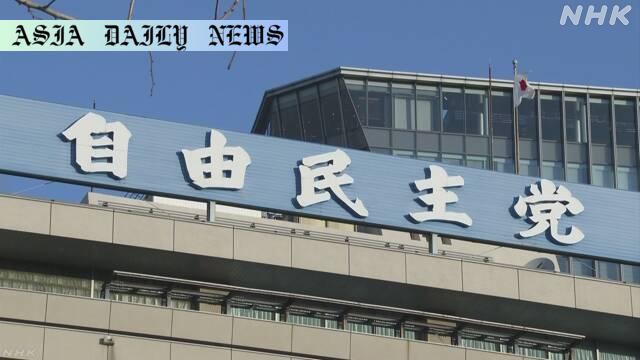Joint Plenary: LDP executives, led by Prime Minister Ishiba, gather to address electoral setbacks and consider key decisions on leadership.
Key Point 1: PM Ishiba Shigeru faces pressure after LDP’s losses in the Upper House election.
Key Point 2: A Joint Plenary Meeting will be held to determine leadership and party management decisions.
Key Point 3: Discussions include whether to advance the party’s presidential election date.
Key Point 4: Party members, especially younger lawmakers, initiated calls for the meeting.
Key Point 5: Decisions could reshape the political direction of the LDP.

Introduction: Understanding the Joint Plenary
The Liberal Democratic Party (LDP), Japan’s ruling party, is at a critical juncture following significant setbacks in the recent Upper House election. Prime Minister Ishiba Shigeru, who also leads the LDP, has been facing increasing calls from within the party to address these losses through decisive actions. The party has now announced that it will convene a key Joint Plenary Meeting, bringing together lawmakers from both houses of the Diet. This meeting is seen as an effort to realign the party’s leadership and respond to internal discord.
Electoral Setbacks and Party Discontent
Prime Minister Ishiba Shigeru has acknowledged the criticism he has received for the LDP’s defeat, and he has stated his intent to handle the situation with integrity. However, voices of discontent within the party, particularly among mid-ranked and younger lawmakers, have grown louder. These members have been working to collect signatures advocating for the convening of the Joint Plenary as a platform to address concerns not only about election outcomes but also about broader party management issues. This coalition of lawmakers signals a shift in internal dynamics, potentially pushing for more democratic or structural changes within the party.
Debate Over Leadership and Election Management
One significant topic expected to dominate discussions during the Joint Plenary is the timeline of the LDP’s presidential election. Some party members have been pushing for an earlier election to address leadership concerns quickly, though LDP Secretary-General Moriyama Hiroshi has emphasized the complexity of such a move. Any decision to change the election date would likely involve input from the presidential election management committee, adding another layer of deliberation. This debate underscores the broader tension within the party regarding its future direction and the stability of Ishiba’s leadership.
Possible Outcomes of the Joint Plenary
As the party navigates this critical meeting, several outcomes are possible. The Joint Plenary could serve as a venue to reaffirm Ishiba’s leadership, albeit with specific conditions or concessions made to the party’s younger faction. Alternatively, it could set the stage for a change in leadership, either through a formal no-confidence motion or by advancing the presidential election. Additionally, the meeting’s deliberations may result in new policies or reforms aimed at revitalizing the party’s image and electoral performance. This unpredictability highlights the high stakes of the Joint Plenary for both Ishiba and the broader LDP.
Implications for Japan’s Political Landscape
The developments within the LDP are likely to have significant implications for Japan’s political landscape. As the ruling party, any shift in its leadership or policy direction could impact national governance and public policy priorities. Moreover, the party’s ability to present a united front in the aftermath of electoral losses will be crucial in maintaining public confidence. The Joint Plenary thus represents not just a moment of reckoning for the LDP but also an opportunity to demonstrate its resilience and commitment to democratic principles within its ranks.
In conclusion, the upcoming Joint Plenary Meeting is shaping up to be a pivotal event for the LDP. Whether it results in leadership changes, procedural reforms, or policy shifts, its outcomes will likely reverberate throughout Japan’s political system. All eyes will be on this gathering as the country waits to see how the LDP navigates one of its most significant challenges in recent history.



Commentary
The LDP’s Crossroads
The decision to convene a Joint Plenary Meeting is a testament to the pressures faced by the Liberal Democratic Party. It reflects an acknowledgment of the party’s need for introspection after its recent electoral losses. For Prime Minister Ishiba Shigeru, this presents a moment of reckoning, where his leadership will be critically evaluated by his peers. This development is not only a reflection of internal party dynamics but also an indication of how modern political parties must adapt and respond to both electoral feedback and internal dissent.
A Platform for Change?
What stands out most about this situation is the proactive role played by mid-ranked and younger lawmakers. Their ability to mobilize support for the Joint Plenary underscores a generational shift within the LDP. It also raises important questions about the balance of power in established political institutions. Will this meeting serve merely as a formal procedure, or will it pave the way for meaningful changes within the party structure and leadership? The answer to this question could have long-lasting implications for the LDP’s future.
Broader Impacts on Governance
The outcomes of the Joint Plenary will likely extend beyond the party itself. As Japan’s ruling party, the LDP’s ability to address its internal divisions will be crucial in retaining public trust. If handled effectively, the meeting could strengthen the party’s image as a democratic and responsive institution. However, if it descends into infighting or fails to resolve the issues at hand, it could lead to further erosion of public confidence. Ultimately, the stakes of this meeting go beyond Ishiba’s leadership, touching on the very credibility of the LDP as a governing entity.
Overall, the upcoming Joint Plenary should be closely watched not only by political analysts but also by the public. It is a critical moment that could define the trajectory of Japan’s political landscape in the months and years to come.